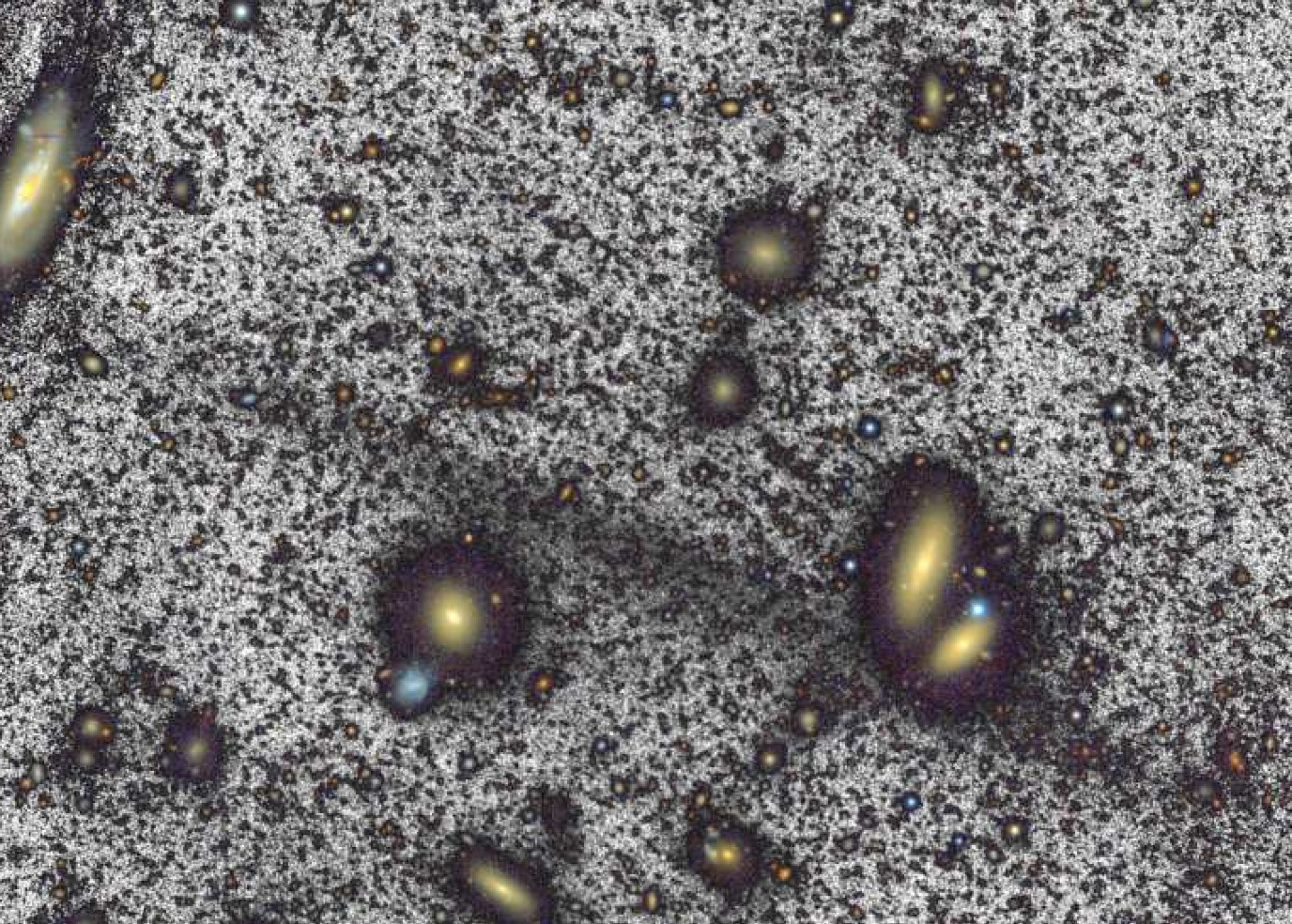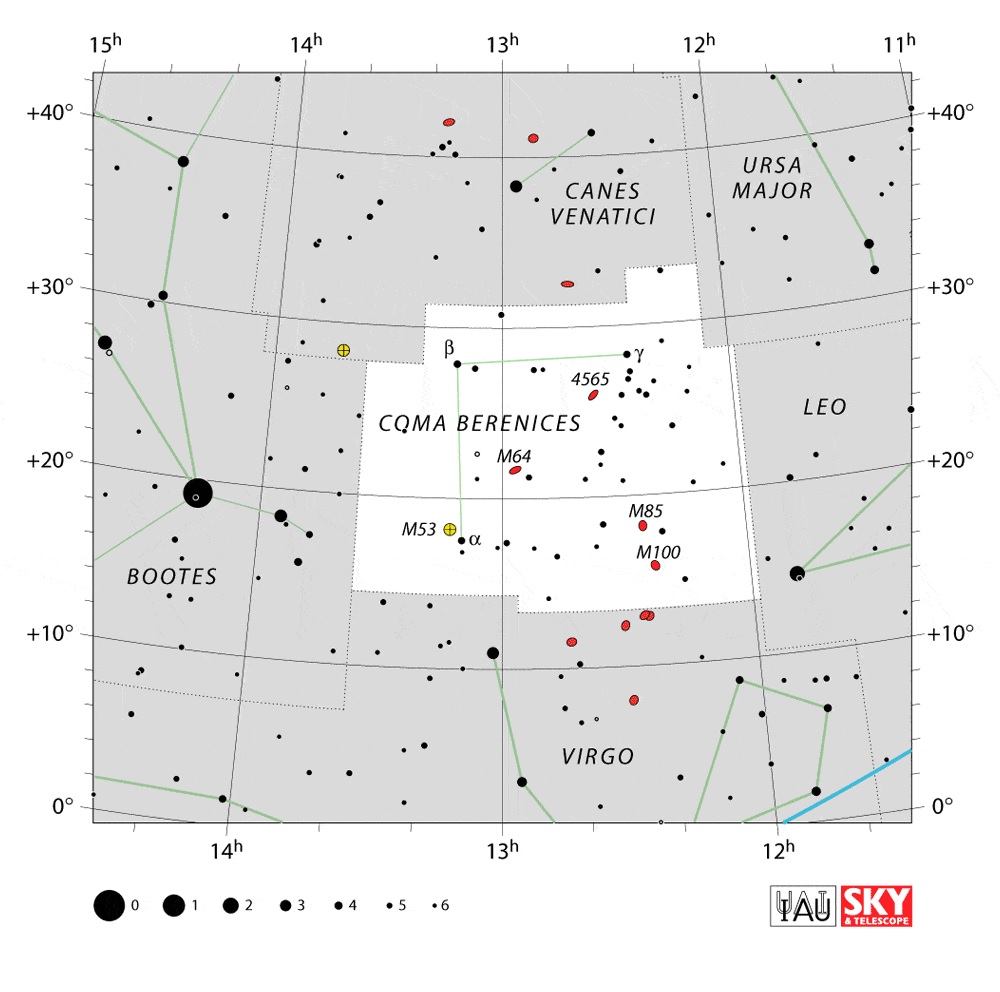Astronomen ontdekken gigantische stroom sterren tussen sterrenstelsels

Een internationaal team van onderzoekers heeft tot hun verrassing een gigantische grote maar zeer lichtzwakke stroom sterren ontdekt tussen sterrenstelsels. Er waren al wel stromen bekend in onze eigen Melkweg en in nabije sterrenstelsels, maar dit is de eerste keer stroom tussen sterrenstelsels. Het is de grootste stroom tot nu toe. De sterrenkundigen publiceren hun bevindingen in het vakblad Astronomy & Astrophysics.
NOVA / FSE Science Newsroom
De eerste waarnemingen werden gedaan met de relatief kleine 70-centimetertelescoop van sterrenkundige Michael Rich in Californië (Verenigde Staten). Vervolgens richtten de onderzoekers de 4,2-meter grote William Herschel Telescope (La Palma, Spanje) op het gebied. Na beeldbewerking zagen ze een extreem lichtzwakke stroom sterren met een lengte van meer dan tien keer die van onze Melkweg. De stroom lijkt te drijven in een cluster van sterrenstelsels en is niet verbonden met een stelsel in het bijzonder. De onderzoekers doopten de stroom Giant Coma Stream.
(Tekst gaat verder onder de illustratie)

Opmerkelijk
‘Deze reusachtige stroom kwam bij toeval op ons pad’, zegt hoofdonderzoeker Javier Román. Hij is verbonden aan de Rijksuniversiteit Groningen en aan de University of La Laguna in Tenerife (Spanje). ‘Eigenlijk bestuderen we halo's van sterren die zich rond grote sterrenstelsels bevinden.’
De ontdekking van de Giant Coma Stream is opmerkelijk omdat het een vrij fragiele structuur is te midden van een vijandige omgeving van elkaar aantrekkende en afstotende sterrenstelsels. Coauteur en RUG-hoogleraar Reynier Peletier legt uit: ‘Met simulaties hebben we inmiddels ook zulke enorme stromen kunnen nabootsen in de computer. We verwachten dan ook dat we er meer zullen vinden. Bijvoorbeeld als we met de toekomstige 39-meter grote ELT mogen zoeken en als Euclid met gegevens komt.’
(Tekst gaat verder onder de illustratie)

Donkere materie
Het Comacluster is een van de best bestudeerde clusters van sterrenstelsels en bevat duizenden sterrenstelsels. Het staat op een afstand van ongeveer 300 miljoen lichtjaar van aarde in de richting van het noordelijke sterrenbeeld Hoofdhaar van Berenice (tussen de sterrenbeelden Ossenhoeder en Leeuw). In 1933 liet de Zwitserse sterrenkundige Fritz Zwicky zien dat de sterrenstelsels in het cluster te snel bewegen als je alleen de hoeveelheid zichtbare materie in ogenschouw neemt. Hij bedacht toen dat er donkere materie (dunkele Materie) moest zijn die de boel bij elkaar houdt. De precieze aard van donkere materie is nog altijd onbekend.
Met de grote toekomstige telescopen hopen de onderzoekers niet alleen nieuwe reuzenstromen te ontdekken. Ze willen ook inzoomen op de Giant Coma Stream zelf. ‘Dan kunnen we afzonderlijke sterren waarnemen en meer te weten komen over donkere materie,’ zegt Peletier.
Meer nieuws
-
19 december 2025
Mariano Méndez ontvangt Argentijnse RAÍCES-prijs
-
18 december 2025
Waarom innoveren, en voor wie?
-
17 december 2025
Ben Feringa wint Feynmanprijs
